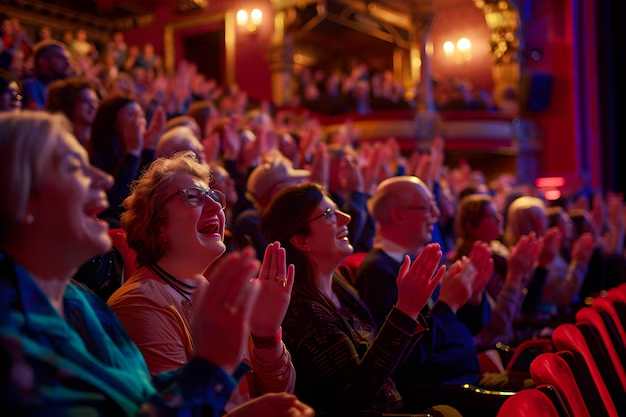by Nikolas Kamtsis
Applause has ever been theater’s pulse. It is the unseen stream running from actor to observer, the populist instant when a crowd makes plain, with hands and wind, that the narrative was important. No substitute exists for that beating pulse. But in our era, applause has taken a new form: the virtual applause of likes, shares, emojis, and commentary. It arrives not in the performance moment, but later, via monitors. It is applause without bodies.
This new applause is valuable. It is not the adversary. Social media is able to propagate the echo of theater outside of a building’s walls. A photograph, a brief video clip, a potent line of monologue can reach thousands, even millions, in a matter of seconds. It can remind young audiences—who frequently encounter the world through a phone device—that theater is a reality, that it has something important to communicate, that it is not a dusty relic but a living art. In this way, social media can be a bridge: a passage from the virtual world into the physical world of the stage.
But the risk is to confuse the bridge with the end. Theater doesn’t exist in clips nor in hashtags. Theater is not watched, it is lived. It is possible to capture a gesture in a reel, but not the shiver of the body that produced it. It is possible to frame a moment in a photograph, but it is not possible to convey the previous silence nor the subsequent silence. Virtual applause prolongs theater’s life, but it cannot substitute the actors’ breath, the weight of presence, the communication between the stage and the house, the energy generated only when bodies are in the same place.
For the young viewer flipping through limitless feeds, theater may seem like just another piece of content. That is why we must make the case again and again: the objective is not to turn theater into content but to employ content to lead audiences to the actual performance. Social media is the map, not the territory. It’s the moment of truth alone that occurs in the theater when the lights dim and the actor is face to face with us—vulnerable, alive, unrepeatable.
In a world of buffered culture, of things screened from view, of anything digital that can be halted, rewound, or swiped out of existence, theater demands attention. It demands presence. It happens once and is gone and only remembrance is left. That is why it is valuable. It teaches us to value the ephemeral, the human, the imperfect.
The question then is not to resist social media but to reimagine its intent. Let’s use it to whet curiosity, to tease glimpses of the unknown, to entice audiences—younger audiences most of all—into the auditorium. Let the virtual applause be to invite: “If you liked that, come and feel it first-hand. If that moved you from a screen, imagine doing it when it lives in front of you.”
Theater must never apologize for being handmade. On the contrary, that is its strength. In a world curated by algorithms, theater offers something uncurated, unrepeatable, human. An actor’s sweat, a trembling voice, a collective gasp from the crowd—these are the treasures that cannot be digitized. Yes, and then let’s welcome arms to virtual applause, but just a bridge. We do not act for the algorithm, but for the individual who walks into the theater, takes a seat, and waits in silence. Likes will echo for a moment, but real applause shakes the walls. It is only there, in the shared breath of stage and viewer, that theater happens.

